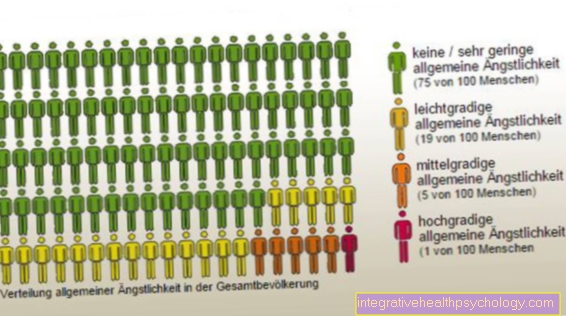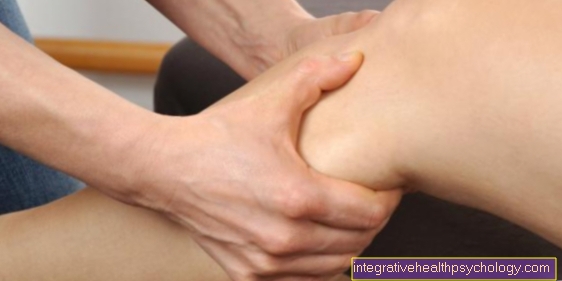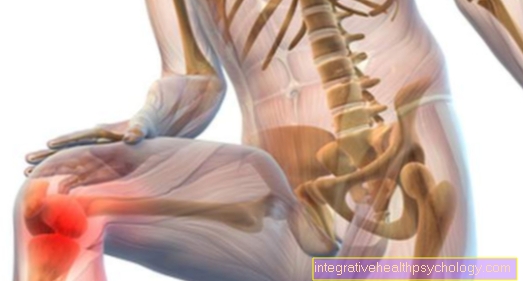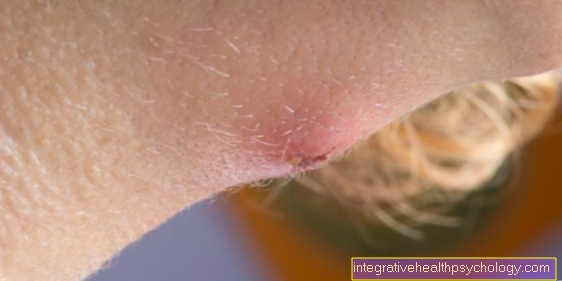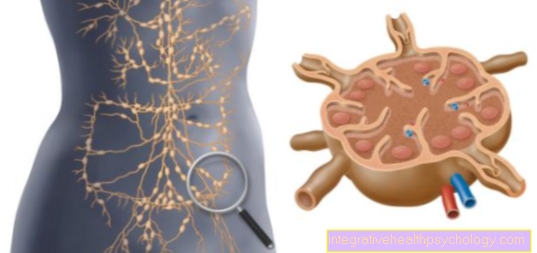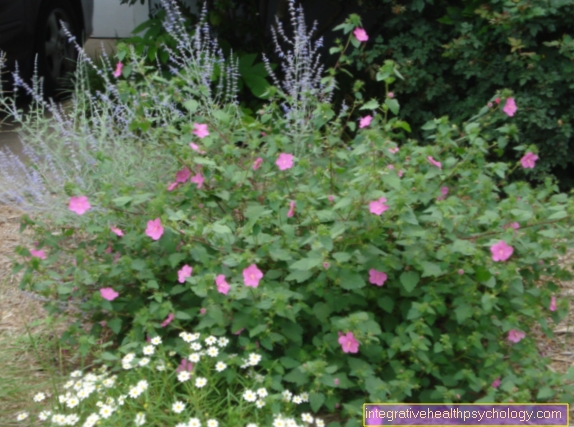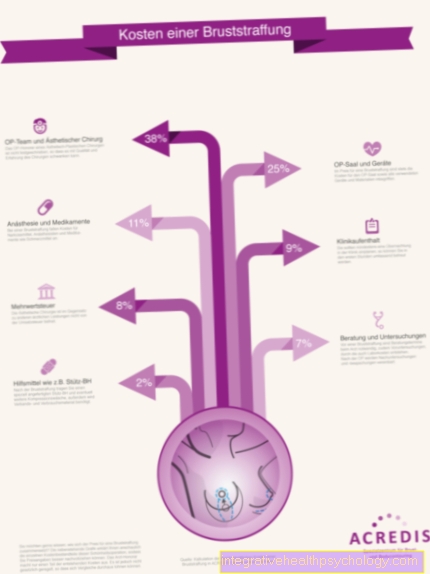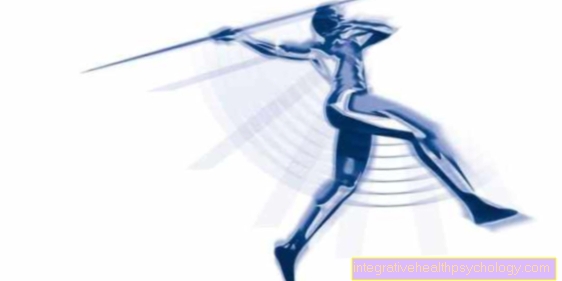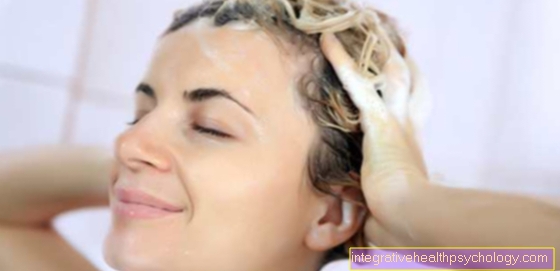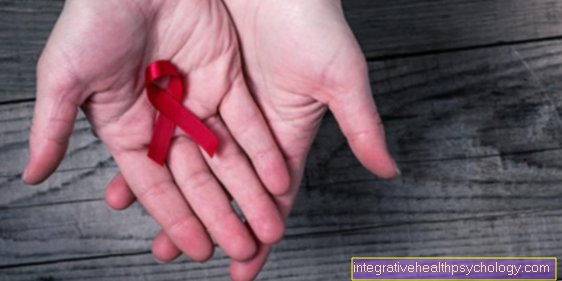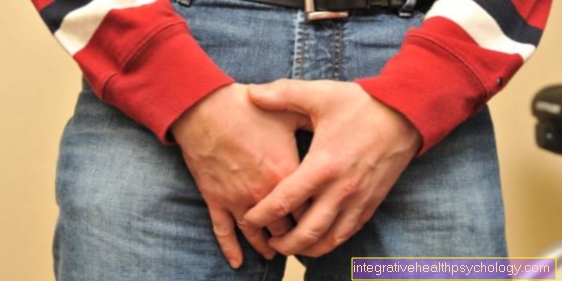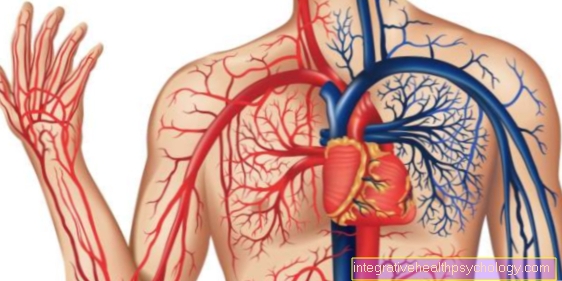Armpit hair
introduction
There are three different types of hair in humans:
- Terminal hair
- Lanugo hair
- Vellus hair
The armpit hair is one of the terminal hairs Hairthat are more pigmented, longer and thicker than the rest body hair. All terminal hairs have the same structure and consist of three layers:
- The Hair pulp lies in the middle of the hair shaft and represents about a third of the diameter of the hair. This is where mainly fats and degradation products from cells are found.
- This is followed by the outwardly Hair bark which forms the main component of the hair shaft. The bark consists of a multitude of fibers made up of keratin (a structural protein). Due to the special arrangement of these fibers, the terminal hairs achieve their high elasticity and tear resistance.
- The one on the outside Cuticle. This serves to protect the hair cortex by completely covering it with the help of its cells, which are stacked on top of each other like roof tiles.

Armpit hair growth
Armpit hair grows in the armpits of people and is one of the secondary sexual characteristics. They don't exist from birth but develop over the course of the puberty (mostly as one of the later signs of puberty) under the influence of certain Hormones. Since the testosterone level is primarily responsible for the development of armpit hair, men have, on average, more armpit hair than women.
Aside from hormones and a genetic predisposition, there are many other factors that influence the intensity of the hair:
For example, the climate affects the armpit hair to the extent that people who live in hot climates have a more pronounced hairiness due to evolution, which is due to the fact that the hair contributes to body cooling through the evaporation of the sweat absorbed there. Rubbing against the armpits can also affect the amount of hair there. All of this contributes to the fact that armpit hair is very different from person to person. Just like the hair on the head, the hair can differ in shape and color in addition to its density. The average lifespan of an armpit hair is about 6 months, which is why this hair is significantly shorter than hair on the scalp, which grows for up to 7 years before falling out.
Function of the armpit hair
Armpit hair performs a wide variety of functions. On the one hand, they are there to absorb the sweat secreted in the armpits. From here it can then evaporate and help to cool the body. Contrary to popular belief, if you have armpit hair you do not sweat more, it is just more difficult to wash odor-causing bacteria from hairy armpits than from hairless ones, which is why it is actually the case that hairy armpits tend to smell unpleasant.
However, this can be remedied by particularly thorough washing. In addition, armpit hair plays a role in sex life: it is considered an optical stimulus (In some cultures, armpit hair is one of the symbols of eroticism) and also help to better distribute sex pheromones. Your third job is to reduce friction in the armpit.
You can also find out more at: Pheromones for men
After removing the armpit hair, a cooling cream or oil can be applied to soothe the skin. Deodorant should not be applied immediately afterwards, as the smallest skin injuries occur and the deodorant can cause burning and pain. Applying antibacterial and soothing aftershave balms disinfects the skin and prevents pimples and redness. One example of this is the Dr. Severin Body After Shave Balm from the pharmacy.
Remove armpit hair

The skin under the armpits is very sensitive, so hair removal can be very difficult under certain circumstances. Basically, from the multitude of methods for removing armpit hair, you should choose the one that causes the least irritation to your own skin. Hair removal methods also differ in the amount of time it takes for armpit hair to grow back after removal. Fast and painless hair removal by shaving, for example, leads to hair regrowth after a short time, as only the ends of the hair are shortened. For this reason, the shave must be repeated every day or two if you do not want to see stubble. When removing the armpit hair with an epilator or wax, the appearance of regrowing hair does not occur as quickly.
To remove armpit hair with a wet razor, the armpit should be moistened with warm water before shaving (e.g. in the shower). If there is a tendency to ingrown hairs, a peeling can be carried out beforehand. Some shaving foam or shower gel should be applied to the skin, the arm held high and the shave should be performed with a sharp razor blade.
When using a depilatory cream for sensitive areas, this can be applied to clean, dry skin and must be left on for a few minutes.
For armpit hair removal with wax, the hair length should be between 6 and 12 millimeters. Depending on the product, the wax is either warmed up or applied cold beforehand. Before that, the armpit should be cleaned thoroughly, then applying baby powder makes it easier to wax. A strip of fabric is placed on the wax, which is pulled from the skin in the fastest possible movements in the direction of hair growth. An epilator is pulled over the dry skin and the hair and its roots are plucked out like tweezers. There are also some permanent hair removal methods such as lasers or flashes of light that should only be performed by a dermatologist.
After removing the armpit hair, a cooling cream or oil can be applied to soothe the skin. Deodorant should not be applied immediately afterwards, as the smallest skin injuries occur and the deodorant can cause burning and pain.
Antibacterial aftershave balms can also help disinfect and soothe the skin. This is especially true after hair removal. One example of this is the Dr. Severin Body After-Shave Balm from the pharmacy.
Shave armpit hair

Nowadays there are many people who shave or pluck their armpit hair. This trend originated in the USA and has been particularly prevalent in Western Europe since the 1980s. However, one can also prove that even some ancient people removed their armpit hair for reasons of cleanliness. In the meantime, however, this has tended to play a subordinate role and hair removal takes place primarily for reasons of aesthetics. Long armpit hair is nowadays considered unsightly in women in particular, and is still more acceptable in men, although there has been an increasing tendency to shave here for about 10 years.
A survey from 2012 found that almost half of all men between the ages of 14 and 29 shaved their armpit hair.Aside from these visual reasons, many competitive athletes also argue that removing armpit hair (and body hair in general) leads to reduced resistance on the surface of the skin, which in some sports, such as swimming, could optimize performance.
Since the armpit skin is relatively sensitive, this area can become irritated after shaving the armpit hair in many people. This is often intensified by the use of deodorants, which additionally stress the skin due to the substances they contain. It is not uncommon for armpit hair to be itchy and small red dots to develop on the affected area.

